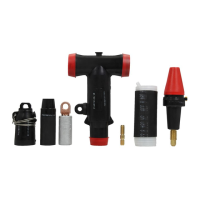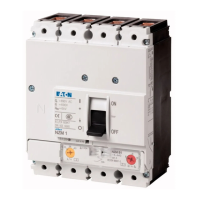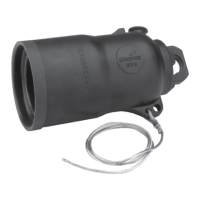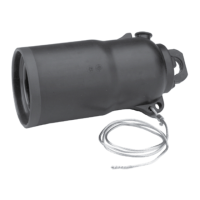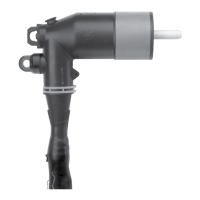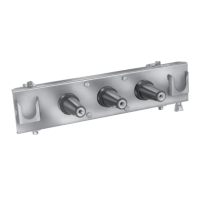No neutral sync signal
CONTROL NOT INSTALLED ON REGULATOR
This most often occurs when powering up a control on a
workbench. The No Neutral Sync Signal means the
control did not have a neutral signal during the self-test
during power up. This can occur because there is no 120 V
signal present on the neutral light input. To confirm this and
clear the error message, perform the following:
1. Escape.
2. Function, 99, Enter, 32123 (default), Enter.
3. Function, 12, Enter.
4. Edit/Reset, (some number from one to 16), Enter.
5. Initiate a self-test.
Function, 91, Enter, Enter, Enter.
The (No Neutral Sync Signal) message should not
reappear.
CONTROL ON REGULATOR
If the control is on a regulator and the (No Neutral Sync
Signal) message appears during power up or self test, or
there is no neutral light, check the input signal at TB
1
-NL to
G. If the regulator is in neutral, there should be 120 V at the
input. When there is not 120 V at TB
1
-NL while on neutral,
the neutral light on the control panel will be off.
If there is no neutral light and no neutral light signal at
TB
1
-NL, verify that the regulator is in neutral. For the
regulator to be in neutral, the position indicator should be
on neutral and if the regulator is energized there should not
be a differential voltage between the source (S) bushing and
the load (L) bushing.
When there is no neutral light and the regulator is powered
up either by internal or external power, check these input
points as follows:
•
TB
2
-NL, located on the bottom terminal board on the
control assembly back panel:
If there in no voltage and there is voltage at TB
1
-NL,
the problem is in the connections in the wiring harness
on the back panel. If there is voltage on TB
2
-NL and no
neutral light, the problem is in the control panel.
•
TB
1
-NL, located on the top terminal board on the control
assembly back panel:
If there is no voltage, the problem can be in the
connection at this terminal point, the control cable, the
connection in the junction box, or inside the regulator.
•
JBB-NL, located on the terminal board inside the
junction box and TCB-NL, located on the tap changer:
If there is no voltage, the problem is inside the regulator,
either with connection point JBB-NL under the cover
assembly, connection TCB-NL on the tap-changer, neutral
light switch, or the neutral light actuator segments.
No input voltage
The (No Input Voltage) message occurs when no
input voltage is sensed or it cannot be calculated. The
input voltage is the source voltage from a differential or
source potential transformer or a calculated value. The
voltage calculation is enabled when FC 39, Source Voltage
Calculation, is set to On, the regulator type is properly set
at FC 140, and the tap position is know.
When this message is indicated and the regulator has a
differential transformer, check for a voltage at V
6
to G, if
V
6
is present. This voltage will be 0.0 V when the regulator
is in neutral. The voltage will increase as the regulator is
tapped up. When the regulator is at 16 raise, the voltage
will be 11.5 to 12 Vac. If there is no input voltage shown
at FC 7, Source Voltage Secondary, and the regulator has a
differential transformer, the problem could be in the control,
back panel connections, control cable, the junction box, the
junction box terminal board under the cover, or the differen-
tial transformer.
If there is not a differential transformer on the regulator,
turn FC 39 to On to verify this indicator. This will supply the
calculated voltage signal, causing the input voltage diagnos-
tic error message to turn off.
Indication messages when using edit key
The following indication messages can occur when using
the Edit key:
•
(Improper Security) message will display while
attempting an edit function when changes are disabled
by the security system. To enable, enter a higher security
code at FC 99, Security Code:
Function, 99, Enter, Security Code, Enter.
Proceed with function code value and setting changes.
•
(Value Too Low) means the function value entered is
below the acceptable limit.
•
(Value Too High) means the function value entered is
above the acceptable limit.
For more information, refer to Indication Messages in
the Control Programming section of this manual.
103
CL-6 SERIES CONTROL INSTALLATION, OPERATION, AND MAINTENANCE INSTRUCTIONS MN225016EN January 2016

